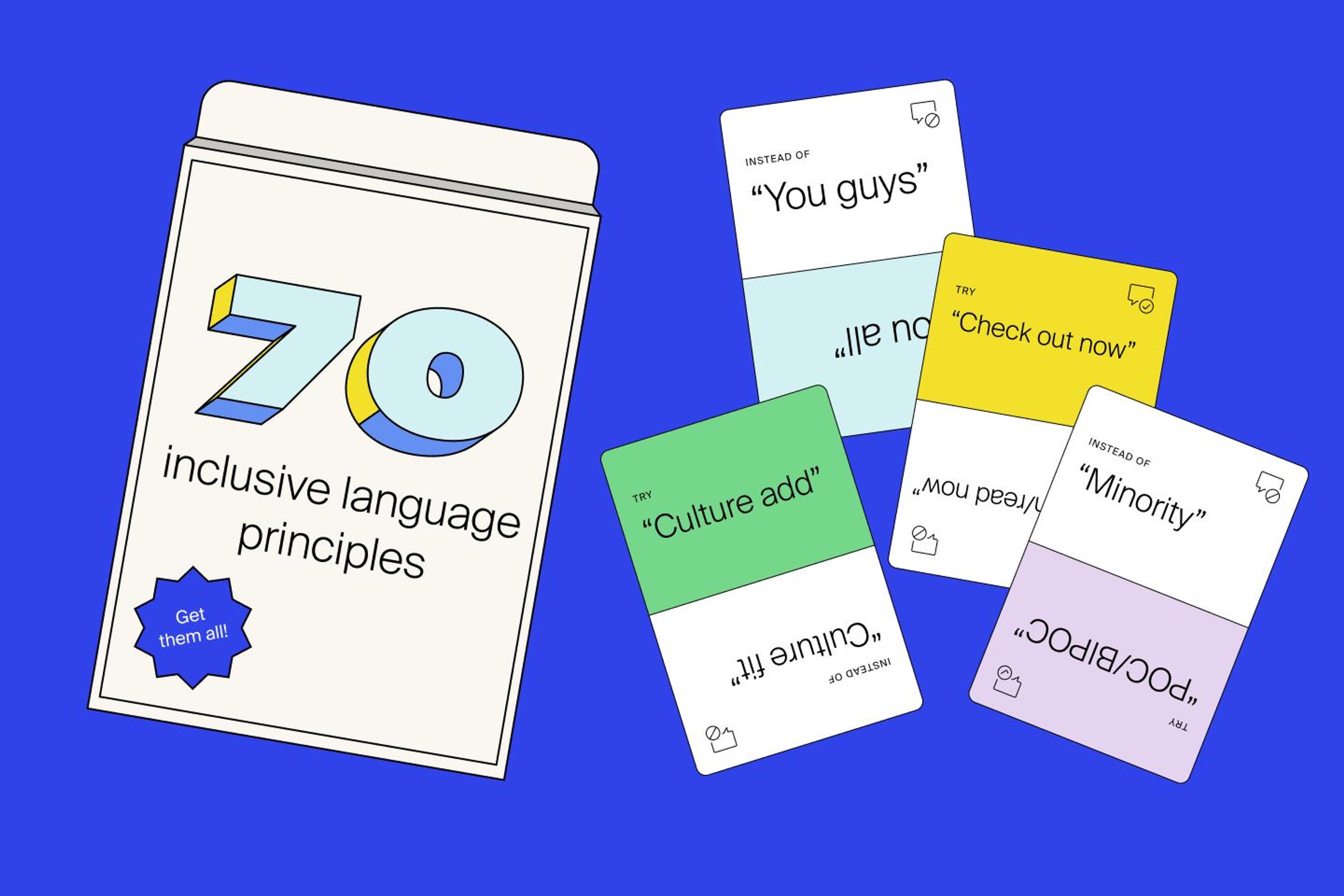Your goal is to add top early talent to your team. It's a tall order amidst ongoing labor shortages and a competitive hiring landscape.
Here's the thing: if you don't recruit candidates with disabilities, you might be excluding highly-qualified candidates. People with disabilities face much higher unemployment rates (8.3% in 2022) than people who don't have disabilities (3.1%). A lot of that discrepancy comes back to biases and even discrimination in the hiring process.
Without paying attention to your word choices, job requirements, and recruitment steps, you could unknowingly discourage disabled job seekers from applying in the first place. So, how can you strengthen your hiring practices to recruit candidates with disabilities?
Learn more about why it’s essential that you update your approach to attract and support early talent candidates with disabilities—and how to do it.
A well-rounded DEI plan factors for disabilities
So much of the diversity, equity, and inclusion (DEI) conversation is focused on gender and race. But to build a truly diverse workforce and provide equitable opportunities, your plan must include all types of diversity. And that includes people with disabilities.
The Americans with Disabilities Act (ADA) defines “disability” as "a physical or mental impairment that substantially limits one or more major life activities." There's a lot that falls under that broad umbrella, and the Individuals with Disabilities Education Act (IDEA) breaks down 13 different disability categories:
- Specific learning disability
- Autism spectrum disorder
- Emotional disturbance
- Speech or language impairment
- Visual impairment
- Deafness
- Hearing impairment
- Deaf-blindness
- Orthopedic impairment
- Intellectual disability
- Traumatic brain injury
- Other health impairment (conditions that limit strength, energy, or alertness)
- Multiple disabilities
Put simply, disabilities themselves are quite diverse. It's worth noting that not all disabilities are visible or obvious to others. You'll like be able to tell from visual cues if, for instance, a candidate’s primary form of communication is American Sign Language. But other disabilities, like mental health conditions, aren't readily detectable.
“I’m shy and autistic. I found myself far more likely to interact with employers on screen than approaching them at a crowded event.”
Anonymous 4th-year student
Neurodiversity is frequently used to discuss autism spectrum disorder (ASD) and learning disabilities, which are officially classified as disabilities. But there's a lot of conversation and debate about whether or not neurodiversity—a term to describe the variations in people's brain functions and behaviors—should be classified as a disability. It’s important to be aware that some people in the neurodiversity community do not classify their experiences as disabilities.
How to inclusively recruit candidates with disabilities
Recruiting candidates with disabilities requires an inclusive strategy. Here are 6 steps to take to make your recruitment and hiring process more inclusive of people with disabilities.
1. Be mindful of your language
Words matter. Even seemingly innocuous choices can have a big impact on how disabled candidates perceive your company—and whether or not they decide to apply. Here are some language updates to consider:
- Use clear language like "disabled" or "people with disabilities;" avoid using differently abled
- Avoid terms like "normal" or "standard," which imply that there's a benchmark that candidates might deviate from
- Use phrases like "check out" or "learn more" in your calls to action, rather than verbs like "see" or "hear"
2. Refine your job requirements
Disabled candidates review your job descriptions with an even more critical lens. They comb through your requirements with the goal of answering this question: Can I adequately perform these job duties?
For that reason, you need to cut the fluff and extraneous requirements from your job descriptions. Instead, clearly state the essential functions. These are the basic job duties they need to perform, either with or without reasonable accommodations. For instance:
- Does someone in the position actually need to use the phone or would other communication methods suffice?
- Do they really need to be able to stand for long periods of time?
- Is lifting upwards of 25 pounds genuinely a core component of the job?
By narrowing in on what's most important for that role (and cutting out the rest), you'll open the door to recruit candidates with disabilities—and a more diverse early talent pool.
The 4 largest autism hiring programs in the US—SAP, JPMorgan Chase, Microsoft, and EY—see retention rates >90%, according to EY.
3. Partner with community organizations
Some employers claim that their struggles recruiting candidates with disabilities is because they don't know the best ways to get in front of these applicants.
Partnering with disability-focused organizations and recruiting platforms like Handshake can help you gain exposure with diverse groups of candidates. For example, maybe your local community has an organization for disabled veterans who are actively looking for work.
If you need a starting point, Stanford University's Office of Accessible Education has a comprehensive list of national disability organizations and resources. The Department of Labor's Job Accommodation Network provides free guidance on accommodations and disability employment issues.
According to a report from Accenture, people with disabilities are an untapped talent market. Disability inclusion champion Microsoft created a week-long academy to assess for skills in lieu of a traditional interview process.
If there are certain roles you’re struggling to fill, consider the unique specific skill sets that candidates with disabilities can offer. For instance, there’s evidence suggesting neurodiverse individuals are good candidates for quality control jobs in the manufacturing industry.
4. Provide necessary accommodations
Accommodations are a crucial part of ensuring your recruitment and hiring process is as inclusive as possible. Plus, the ADA actually requires that you provide reasonable accommodations to qualified applicants or employees.
Only 39% of employees with disabilities have disclosed their disability to their manager, proving that this is a sensitive topic for many disabled people. Regardless of what the modifications are, don't make it hard for candidates to request what they need.
For example, you might provide a captioner or interpreter during an interview for a candidate who is hard of hearing. Or, perhaps a neurodivergent applicant will need a quieter interview space or to be interviewed by only one person at a time—rather than a panel.
Remember that inclusive practices start even before the candidates connect with you. Think about your brand’s online presence and audit your processes for inclusivity. Do you provide alt text on web images? Closed caption capabilities on Zoom interviews? Pre-interview surveys to give hiring teams a heads up about accommodations?
Don't make interviews even more daunting with a complex and tedious process—like numerous conversations and lengthy forms. If and when a candidate asks about an accommodation, respond positively by stating that you want them to be as successful as possible through the interview process and are more than happy to collaborate and find a solution that works for both of you.
5. Understand what you can and can't ask
Your hiring and interview process is focused on finding the applicant who's the best fit for your open role—and, to do so, you need to confirm that they can adequately perform the job duties. This can feel even more complex when a candidate has a disability. You want to ask questions to ensure you have the right understanding of any limitations, but you also don't want to be insensitive—or violate any laws.
In general, the U.S. Equal Employment Opportunity Commission states that employers are not allowed to ask disability-related questions until after they've given the applicant a conditional job offer. However, there are a few exceptions to what you can ask prior to extending an offer:
- You can ask about reasonable accommodations if you believe the applicant may require it because of an obvious or voluntarily disclosed disability, or a voluntarily disclosed need for accommodation
- You can ask if the applicant will need an accommodation to perform a specific job duty as well as what the accommodation would be
Those types of questions will help you better understand how to support that applicant in the role. But even so, as the Job Accommodation Network explains, make sure that you don't focus the entire interview on the candidate's disability. Like any other applicant, the bulk of the conversation should be dedicated to their qualifications, skills, and experiences. Still unclear what to do? Reach out to your legal team for advice.
6. Get feedback from existing employees
Not sure if your hiring process to recruit candidates with disabilities—or even your organization as a whole—is inclusive? There's a way you can find out: Ask your employees.
Work with your HR team to create safe spaces for people to share their opinions. For example, focus groups or anonymous surveys enable employees to provide feedback about their own experiences with your recruitment and hiring processes. It's an effective opportunity to hear about any challenges they faced and what they'd change if given the chance.
Additionally, if your company has employee resource groups (ERGs) and has one specifically for disabled employees, that could be a solid resource to turn to for advice, guidance, and feedback about your current hiring practices—and your company culture overall.
Invite employees who are willing to discuss their disabilities to share their experiences at work in a bigger forum—a tactic that is extra impactful for early talent who are eager to see themselves in the workplace.
Remember that recruitment is only the start
Actively recruiting candidates with disabilities will help you attract a broader pool of early talent and build a more diverse team.
But remember, recruiting is only the first step. The last thing you want is to bring employees in and have them realize that your organization doesn't provide the support and sensitivity that was promised during the hiring process.
While you should invest time, energy, and strategy into ensuring your recruitment and hiring processes welcome people with disabilities, make sure that you also foster an inclusive environment once they actually sign the offer letter.

